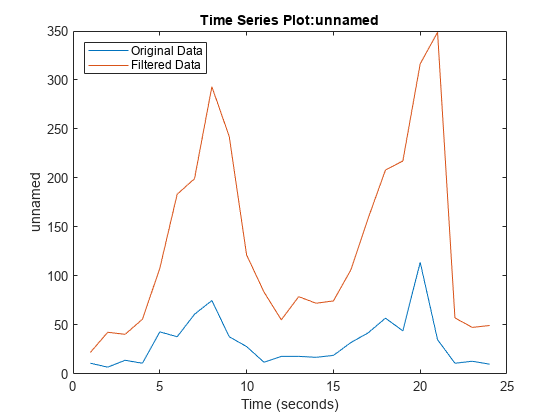filter
Modify frequency content of timeseries objects
Description
tsout = filter(
applies the rational
transfer function filter b(z−1)/a(z−1) to the uniformly-spaced data in the tsin,b,a)timeseries
object tsin. The numerator b and denominator
a are vectors containing the transfer function
coefficients.
Examples
Input Arguments
More About
References
[1] Oppenheim, Alan V., Ronald W. Schafer, and John R. Buck. Discrete-Time Signal Processing. Upper Saddle River, NJ: Prentice-Hall, 1999.
Version History
Introduced before R2006a


